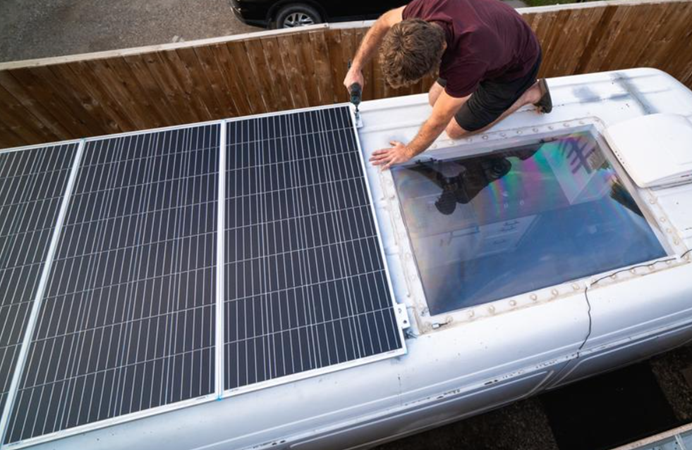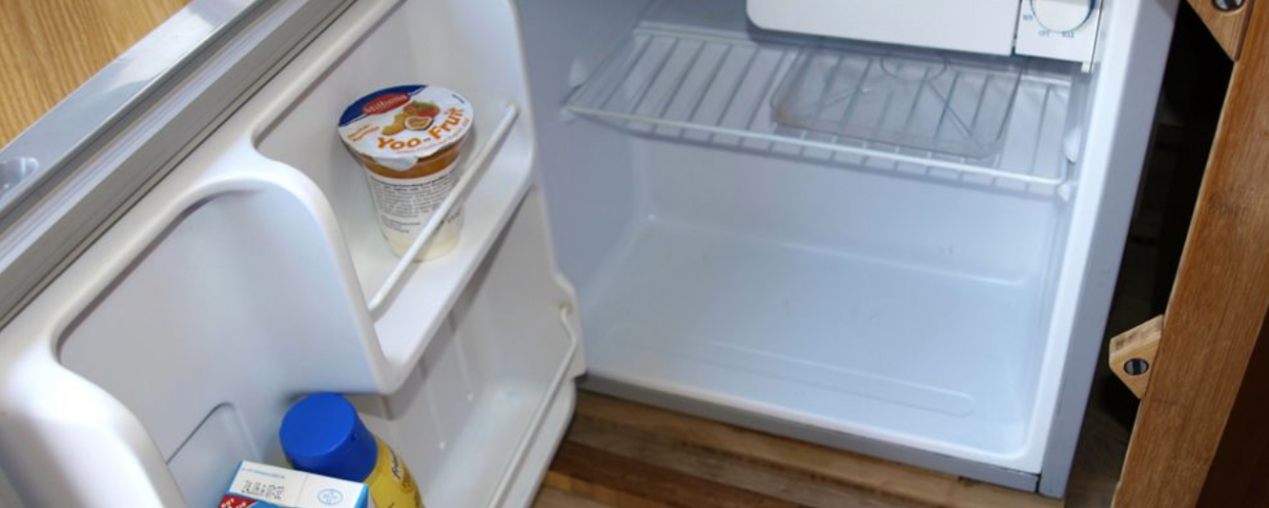Better cool box, decent compressor fridge, or something in between, than a motorhome fridge or camping fridge in the caravan? Everyone is faced with this question at some point – when expanding a mobile home or when the old refrigerator has bitten the dust. Everything has pros and cons, and as often with camping, the answer is: it depends. Whether you want to cool with gas, how much should fit in, how much off grid solar system you have installed, etc.

A 230V compressor fridge is ideal as a camping fridge, at least as long as a 230V power supply is guaranteed at all times. And if you tend to pack at least a crate of beer and a lot of grilled food, the fridge in the motorhome or caravan should be larger. Otherwise, a few more thoughts are due. I have more than just the cooling technology and energy supply in mind.
I need help investing in a new refrigerator for my mobile home. The normal cool box has been enough for camping in recent years. I only need cooling to prevent dairy products from clotting. Summer drinks can also be slightly cooler than 35 degrees outside temperature. Spend several hundred euros on a (hybrid) camping fridge? Disproportionate for my purposes.
Absorption refrigerators that can be operated with gas and electricity, 12V and 230V, are installed as standard in mobile homes. They have advantages and disadvantages. A disadvantage is that they sometimes have problems with high outside temperatures – without an additional built-in fan, they can’t cope with it. Also, their energy consumption when cooling to 12V is rather “suboptimal” underground, so I quickly rejected such a hybrid fridge. To be more precise, this was the point at which I finally decided to rely entirely on electricity for the energy supply to make my mobile home conversion gas-free.
Everything supposed to generate cold or heat represents an energy problem in the mobile home – especially if there is no permanent shore power. There are three techniques for camping but. Keeping the camper fridge cool:
- Compressor: A gaseous refrigerant is compressed. The typical black spirals on the back of the device act as heat exchangers. Modern compressor refrigerators are characterized by their high energy efficiency. They are available in 230V (cheap, normal household refrigerators) and 12V (expensive, because special camping refrigerators)
- Absorber: Cold is generated here with a water-ammonia mixture (ammonia > heat emission, water > cooling). Advantage: low noise level. Disadvantage: Good cooling performance on gas, but less on 12V.
- Thermoelectrics: The Peltier effect is used for cooling. Classic area of application: cool electric box. It’s a noiseless technology, but the fans can sometimes be very loud. They are compact and, therefore, flexible.
It doesn’t matter to me which technology the refrigerator in the mobile home uses – it’s all chemical-physical processes that take place in the background. The main thing is that the camping fridge makes you cold, what more could I want. In addition, the advantages/disadvantages mentioned here are by no means universal. Ultimately, it also comes down to construction and builds quality. Because even a compressor fridge can be a power guzzler, an absorber fridge can be uncomfortably loud, and the 12V cool box can be unwieldy. So at the end of the day, it’s more about decibels, energy consumption, and other things.
Energy will always be an important topic in the mobile home – especially when camping independently. And the RV fridge, in particular, can draw a lot of electricity or gas, especially when the outside temperatures are high; it has a lot to do with and runs through.
Classically, the camper fridge runs on gas but can be switched to 12V, a hybrid fridge. For my purposes, such was out of the question – for several reasons. On the one hand, such a gas refrigerator with a 12V or even 230V switching function is far too expensive for me. WAECO or Dometic are typical manufacturers of camping fridges, but also cool boxes. A reasonably usable mobile home refrigerator costs 300 euros. Cool boxes, even larger ones, are slightly cheaper. Here, however, you must be careful how they regulate the temperature – simple coolers often need a temperature sensor. They run continuously. And capitulate – depending on the technology when the outside temperature is too high.
Should I now adapt my camping fridge to my energy concept or the other way around? Gas bottle, 12-volt vehicle electrical system, or 230V? This question kept me very busy while expanding my mobile home and concerning other devices. Because there may be the question of how many solar modules have to be on the mobile home and to what extent the electricity generated can be used efficiently. Less is better – this applies to power consumption in the mobile home, and the camping fridge, which should (also) run on electricity, is an important factor.
Ultimately, I decided to do without large gas bottles in the motorhome. This means a gas refrigerator fails, so it has to be cooled with electricity. So I looked at 12-volt RV fridges. And finally decided to stay on 230 volts. Because here, I have an advantage: my 230V mini fridge is quiet and energy-efficient, offers enough space, and is compact at the same time. The only downside is that it briefly draws 500 watts at the beginning and end of a cooling period. If only for a few seconds, it drops to 50 watts during the cooling phase. But the inverter must still be able to handle at least 600 watts. Which again is a little less energy efficient – because it also needs electricity in standby mode. But what the heck, a more sensible solution has not come up.
Incidentally, the issue of the extended start-up current also applies to large household refrigerators: the large AEG refrigerator with a separate freezer compartment, which we install in our truck conversion to a mobile home, requires around 500 watts when starting up before it levels off at 50 watts consumption in the cooling phase.
Incidentally, I decided against a pure 12-volt solution because the cooling capacity of the cheaper devices here is rather manageable. So when I want it to be cold in my camping fridge, namely at 35 degrees outside temperature, there shouldn’t be any really cold drinks.

There are also larger, high-priced 12V compressor refrigerators for motorhomes. Vitiligo, Kissmann, or Dometic offer these. Pay at least 800 euros for a small camping fridge. I would not do it. But if it’s an option, you can find something on Amazon.
It has to be said: We have a Vitrifigo installed in Andres Vario for daily use. And we aren’t really happy with this RV fridge. The freezer should be defrosted weekly. After a month, when the flap won’t open to all the ice, I’ll do it too. Everyone we know who has installed a 12V Kissmann refrigerator reports the same problem.
Absorption refrigerator with hybrid technology (12V, 230V, gas)
Absorption refrigerators are THE standard solution in motorhomes. They mostly operate on gas while driving, maybe on 12 volts and the pitch with 230 volts. Dometic is an established manufacturer, probably the market leader among camping fridges. Otherwise, there is not much to say here, as the same advantages and disadvantages apply to the absorber cool box.
12V compressor fridge for motorhomes
Suppose you only want to operate your camping fridge with electricity and do so as efficiently as possible without using an inverter or having to use shore power. In that case, you should consider 12-volt fridges for mobile homes. The selection here could be more plentiful. You can directly use 12v lithium ion battery to power your fridge.
In terms of price, we have reached the top here: 1000 euros are quickly gone for a 12V compressor refrigerator. But yes, it can be worth it. Especially if you already have a lot of monocrystalline solar panels installed on the mobile home and want to operate the refrigerator exclusively with solar energy.

